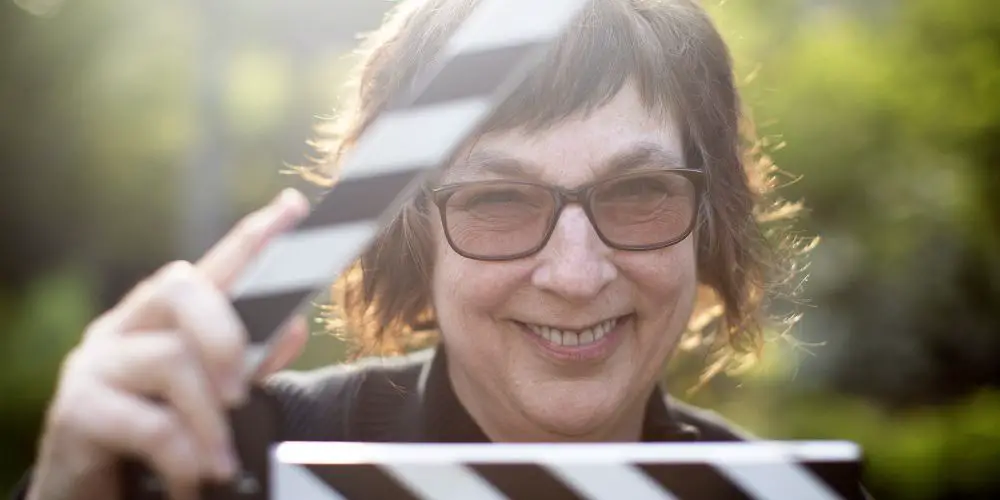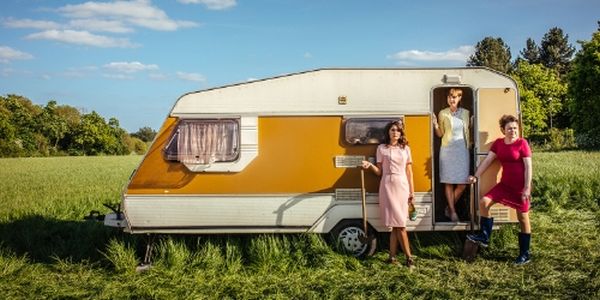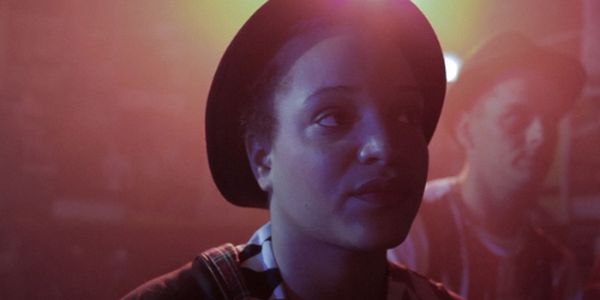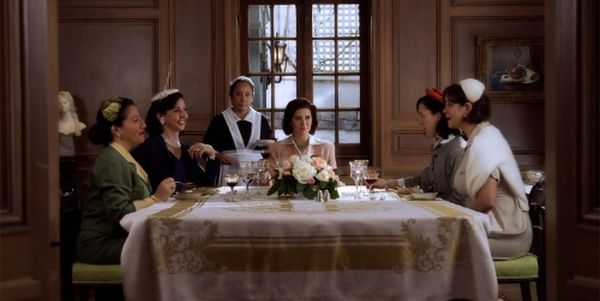Interview With Bluestocking Film Series Director Kate Kaminski

Manon de Reeper is the founder and CEO of Film…
Bluestocking Film Series is an an exclusive showcase for provocative, well-produced films that feature complex female protagonists driving the narrative and leading the action. Moreover, all films submitted to the series must feature a female protagonist, and must pass the Bechdel-Wallace Test.
It’s the first ever U.S. film event to receive Sweden’s A-Rating (which informs consumers whether films pass the test). At the series, they make a point of celebrating and promoting talented, emerging filmmakers who take the creative risk of placing female protagonists front and center and introduces audiences to those who are bound to influence the future of filmed entertainment.
I had the great opportunity to have a chat with Bluestocking Film Series founder and director, Kate Kaminski. Kate is a screenwriter, director and independent filmmaker herself, and knows from first-hand experience how hard it is to “make it” as a woman in the film industry. Nonetheless, over the span of her career, she has created over 25 films, including four features.
She also holds a bachelor’s degree in psychology, and teaches film production, film studies, social media and screenwriting at the University of Southern Maine and Maine College of Art.
The Bluestocking Film Series took place three weeks ago, from 14-16 July. This was their sixth year, and will most definitely be back in 2017! Here’s this year’s pre-show reel, to get an idea of what they screened! Continue reading for my chat with Kate.
https://vimeo.com/175395906
Manon de Reeper for Film Inquiry: How did you come to found the Bluestocking Film Festival? How did you come by the name “Bluestocking”?
Kate Kaminski: I founded Bluestocking Film Series in 2011 because I realized there was no longer a women in film event in the state where I live (Maine). While we had other well-known film festivals here, none showed any particular interest in gender inclusiveness.
What’s more, I had a vision of a festival that would be differentiated from other women’s film festivals by its focus on on-screen representation of women and girls in narrative films. As a film lover, I don’t see female characters taking their rightful place as main characters in either mainstream or indie cinema.
I want to see 50% of films driven by female protagonists, in stories that focus on their own needs and wants versus serving only as support for the male main character.
Bluestocking as a name was meant to evoke the idea of women intellectuals, women who are valued not because of what they look like but because of their minds.
This was the sixth iteration of Bluestocking FF. What have you learned over the years?
KK: I’ve learned that every year brings something new, whether it’s the types and varieties of films we receive and select, or the women in film we bring into our process. We started as a biannual “series” and have evolved into a three-day festival.

I’ve also learned how important it is to engage not only my local community but the wider, global community of women in film, as well as those men in film who believe, as we do, that gender equity is a critical imperative for the continued evolution of cinema as an art form.
Just to be clear, not only do your films need to have female protagonists, they also need to pass the Bechdel test. Did you receive a lot of submissions with films with female protaganists that didn’t pass the Bechdel test, over the years? How do you test this?
KK: Well, we certainly have received our share of submissions over the years that don’t pass the test. Usually, I won’t even take those films into consideration (or take the filmmaker’s money) because I feel badly when filmmakers don’t do their homework about what kind of festival they’re submitting to.
That said, and just as one example, last year we screened “Knit One,” a film by Australian filmmakers Clare Gray and Claire D’Este, that doesn’t contain a single line of dialogue. Yet the film is about a relationship that develops between a lonely widow and her equally lonely teenage neighbor when they engage in a yarn bombing contest of wills. To us, this is a “pass” in spite of the lack of dialogue.
In the end, it all comes down to: what is the focus of the film? Is it firmly on a female character and does she interact meaningfully with another female character? It’s not about the exclusion of male characters, but it is about films where the female main character’s needs, wants, and desires drive the narrative.
You’re hosting the film festival in Maine – why Maine? What is the Maine film scene like?
KK: I live here and I love Maine so that’s “why Maine.” But, just like in Hollywood, the Maine film scene is dominated by men.

I’ve been making films here since 1990 and over the years, I’ve seen male filmmakers receive necessary support from community, press, and granting organizations, support that lends legitimacy to their work that I and the other women filmmakers here struggle to get. It’s frustrating but it only makes me dig in my heels and work harder.
What is your dearest memory of your film festival? What’s your greatest achievement?
KK: So many great memories, how can I pick just one? I suppose if I must pick a moment, we were thrilled the first time we got a mention in the calendar section of Ms. Magazine (in 2014).
It felt like the first tipping point for the Bluestocking Film Series. Every small success means we are one step closer to achieving our goal, which is to prove to the world that female-driven films have artistic and commercial potential.
Our greatest achievement is continuing to manifest the kind of event where all participants feel part of the community we’re trying to create: a community of film lovers, filmmakers, and audience who want to see and celebrate women’s voices and stories.
What has it been like for you, making it in the film industry as a female filmmaker with so many credits? Do you feel opportunities have changed, for women?
KK: I came out of film school in 1992 at the top of my class with a feature-length script and a dream of making independent films. I quickly realized that my options were extremely limited because of my gender, and when my script was rejected by every production company from New York to Los Angeles, I was discouraged and I quit making films for two years.
Then, with the advent of video in the mid-90’s, I realized I could still practice my craft (without a lot of money), so I dove back in and have been steadily producing work independently, on a shoestring, ever since.
I came into filmmaking as a writer first, and I’m quite driven by the need to tell stories. While I’m certainly often constrained by finances, I’m never constrained by my imagination and I feel very fortunate to be able to work with so many talented actors and crew people here in Maine.
That said, I do wish there was more public support available to filmmakers like me, who work outside the mainstream. When I was developing myself as a filmmaker working in video, I literally had no mentors or role models of other women doing what I was doing, to look to for inspiration. And when your work doesn’t look or sound like everybody else’s, or if you deliberately push against what people stereotypically want to see from women filmmakers, I think it’s even harder to get support.
I think there is a lot of lip service paid to greater opportunities being available for women in film, but I fear that much of it is tokenism. Oh, look, we gave this ONE woman this ONE incredible opportunity to make her film. That isn’t progress.

I will say that the commercial film industry needs to wake up from the misogynistic nightmare it’s created for women in front of and behind the camera. If the only definition of a strong woman character is one where she has to carry a gun and kick ass, then that’s still a big problem.
And if the only women directors who have a chance at making bigger budget films are already well-connected actors, or the wives, sisters, or daughters of powerful Hollywood players, that is also a problem. That isn’t an equal playing field.
And the young women who go to film schools in equal numbers as their male counterparts will have not get a chance at actually practicing their craft as a profession.
Do you have any advice for female filmmakers trying to make it in the film industry today?
KK: Never give up. Never give in. Speak up, don’t comply. Demand to take your place behind the camera and don’t let your voice be silenced.
What projects are you working on, yourself, at the moment?
KK: Right now, I have a recently-completed short documentary about being an actor of color in Maine called “Eiayay’s Reel Life,” that’s struggling to find its audience (having been rejected from several festivals), so if anybody wants to show it, hit me up.
I’m also noodling around with an idea for a transmedia project that would include live performance, film, and interactive elements. And my partner in cinema anarchy, Betsy Carson, and I are shortly going to release a three-episode improv comedy web series called Beach Bunker Babylon that we shot last year. Like I said, I’m driven to tell stories!
Thanks so much for taking the time to answer my questions, Kate!
You can find Kate on her website, katekaminski.com, and GitGo Productions Vimeo, where you can watch some of her work. Find Bluestocking Film Series on Twitter!
Does content like this matter to you?
Become a Member and support film journalism. Unlock access to all of Film Inquiry`s great articles. Join a community of like-minded readers who are passionate about cinema - get access to our private members Network, give back to independent filmmakers, and more.
Manon de Reeper is the founder and CEO of Film Inquiry, and a screenwriter/producer. Her directorial debut, a horror short film, is forthcoming in 2021.













